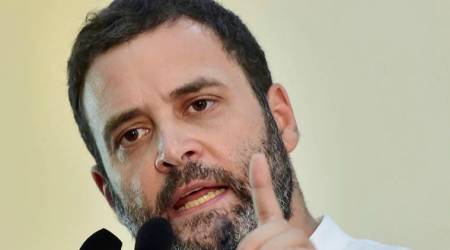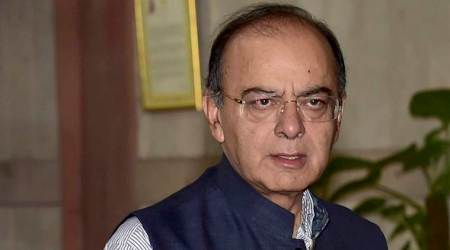 Demonetisation: PM Narendra Modi announced the demonetisation of Rs 500 and Rs 10000 notes on November 8, 2016.
Demonetisation: PM Narendra Modi announced the demonetisation of Rs 500 and Rs 10000 notes on November 8, 2016.
“Tab (previous UPA) aawaz uthti thi ki kitna gaya, ab aawaz uth rahi hai ki kitna laye. Isse bada jeevan ka santosh kya ho sakta hai…Yahi toh sahi kadam hai…Woh zamana tha tab aawaz uthti thi, kitna gaya, ab aawaz uth rahi hai, kitna aaya aur aakar rahega, aata rahega,” Prime Minister Narendra Modi had taken a political dig at the Opposition parties’ criticism of demonetisation during his reply to the discussion on the motion of thanks on the President’s speech in the Lok Sabha on February 7 this year.
The RBI’s revelation that 98.96 per cent of the old Rs 500 and Rs 1,000 currency notes returned to the system shouldn’t have come as a surprise to many. In fact, a scrutiny of RBI’s earlier provisional disclosures and the government’s structured public remarks reveal a pattern: aware that much of the money would return, the government and the political establishment kept shifting the goalposts. So on Day One, November 8, the “mahayagna” was “against corruption, black money, fake notes and terrorism.”
A fortnight later, Attorney General Mukul Rohatgi told the Supreme Court that the Government expected to ‘neutralise” “Rs 4-5 lakh crore…used in northeast and J&K to fuel trouble in India.” By then, only 35 per cent of the banned money had come back. A government source today played down Rohatgi’s those remarks as part of “court craft deployed by lawyers to win brownie points.”
Read | Almost 99 per cent of demonetised cash is back, discloses RBI
In his Mann Ki Bat on Novermber 27, the first after demonetisation, the Prime Minister exhorted citizens to take the country towards a “cashless economy.”
“But the great task that the country wants to accomplish today is the realisation of our dream of a ‘Cashless Society’. It is true that a hundred percent cashless society is not possible. But why should India not make a beginning in creating a ‘less-cash society’?” The very next day, three weeks into demonetisation, the RBI disclosed that about Rs 8.45 lakh crore (about 55 per cent) of old currency had come back to the system.
These figures further shot up when RBI’s provisional disclosure on December 13 revealed about Rs 12.44 lakh crore (over 80 per cent of old currency) was back within 35 days of the announcement of demonetisation. With this swift return of currency undermining the economic logic of such widespread disruption of the economy, gears were shifted to politics.
Read | Your claims flat, apologise to the nation: Opposition tells Modi government
“There is no precedent globally to what India has done…The excess of cash was fuelling inflation and black-marketing. It was denying the poor, their due,” the Prime Minister said after the end of 50 days of demonetisation on the eve of New Year 2017. He invoked the likes of “Jayaprakash Narayan, Lal Bahadur Shastri, Ram Manohar Lohia, and Kamaraj” to applaud citizens for braving inconveniences during the demonetisation.
Applauding popular support, he framed it into a battle between ‘honest and dishonest’ and ‘rich vs poor’. “Therefore, it is the responsibility of all of us in Government, at central, state and local levels, to protect the common man, help the honest, and isolate the dishonest.” Modi said reminding that “there are only 24 lakh people in India who accept that their annual income is more than 10 lakh rupees. Can we digest this? Look at the big bungalows and big cars around you”.
This was reflected in subsequent narratives. Replying to a debate in the Rajya Sabha on February 8, Prime Minister said that “we will have to be tough on those who are cheating the system. When we do that, the hands of the poor will be strengthened”.
Participating in the same discussion, Finance Minister Arun Jaitley had lambasted the Opposition for criticising the government’s drive for less-cash society. “It is no credit to any economy that you predominantly deal in cash because cash has a lot of vices… I cannot think of anyone in the world who now propounds the virtues of dealing only in cash,” Arun Jaitley told Rajya Sabha on February 8.
Read | Tax base up, less cash, less black money, Arun Jaitley underlines
“There is a horizontal divide — on one side are the people of India and the Government and on the other side are a group of political leaders,” the Prime Minister said on February 8.
Even as economists did a cost-benefit analysis of the move, the BJP reaped political dividend in Uttar Pradesh. The narrative of demonetisation as a battle between “rich and poor” and “honest and dishonest” caught the imagination of many and party leaders admitted that it played a role in BJP’s spectacular win in Uttar Pradesh.

